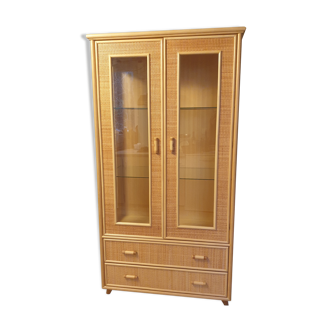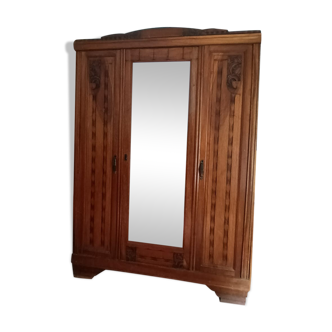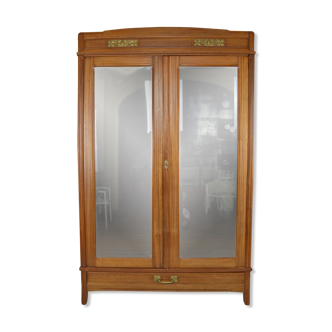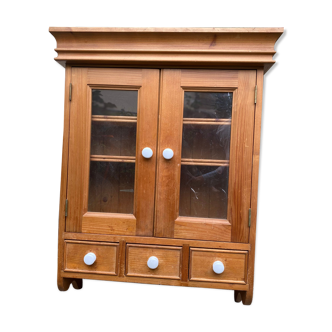Art Nouveau style wardrobe with signed plaquette by Geo Vervanck, Belgium
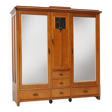
- Dimensions :
- H210 x W208 x D60
- Color :
- brown
- Material :
- wood
- Style :
- art deco
Belgium / 1920 / Wardrobe / Geo Verbanck / oak, copper / Art Deco / Art Nouveau. A stylish Art Nouveau wardrobe or armoire in solid oak with a copper plaque signed by the Belgian artist Geo Verbanck. This monumental wardrobe has two large doors with facet-cut mirrors with a hanging wardrobe for clothes behind it. Under these doors you will find a large drawer on both sides. In the middle a door with 2 spacious shelves behind it. Under this door a handy pull-out wooden tray and below three smaller drawers. The wardrobe has beautiful wood carving, Art Nouveau fittings and subtle black and white inlay. With the large hanging space and multiple drawers, it offers ample storage for your clothing, accessories, and personal items. This armoire is designed to meet your needs while elevating your home’s interior. Geo Verbanck was born in Ghent on 28 February 1881. He studied art at the Royal Academy of Fine Arts in Ghent and the Royal Academy of Fine Arts in Brussels. Geo Verbanck gradually became better known, partly through his participation in national and international exhibitions. In 1912 he was assigned the design of the Monument in honour of the Van Eyck brothers in Ghent, together with architect Valentin Vaerwyck, and that meant Verbanck's definitive breakthrough as an artist. In 1941 Verbanck was awarded the state prize "Grand Prize of the Plastic Arts" for his entire oeuvre. Verbanck is considered one of the last classical sculptors and "le poète de l'élégance". His broad craft training allowed him to create works in a variety of materials. His oeuvre includes works in plaster, bronze, various types of stone (Arduin, marble, Euville (limestone)), ivory and various types of wood such as oak, lime and palm. His education at the academies in Ghent and Brussels allowed him to develop his own sensitive figurative style in which a classical purity, harmony and an intuitive sense of the right dimension were paramount. Ref. 25-0177.
5 ()


















































